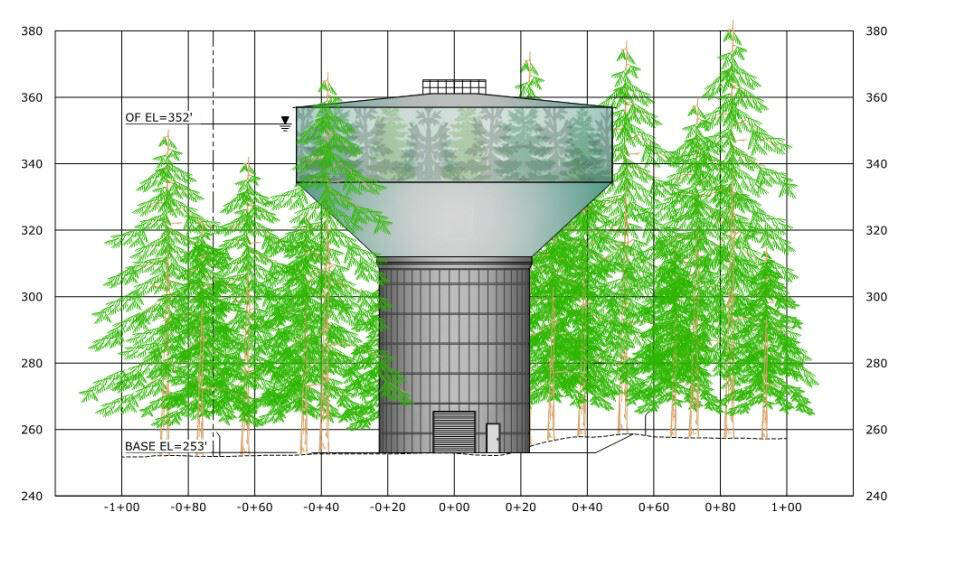“I have the worst water pressure, and I’m right here,” Kassia Sing said.
She and other community members took a walking tour of the Winslow Water Tank Replacement project with civil engineers Aug. 11 at the proposed site of a new elevated water tower scheduled for construction behind home plate of the Bainbridge High School softball field beginning in summer of 2023.
The benefits of the elevated tank include; improved water pressure, better water quality and more storage capacity.
If built as described by civil engineers, the new tank concept sounds like a medieval watchtower with a moat to capture stormwater. Structurally, it will resemble the water tower on Blinken Road in Poulsbo. The project consists of demolishing Tank 1 and constructing a 2 million gallon elevated one in its place. Tank 2 will be retained and seismically upgraded to be used for backup and emergency use.
Project manager Chris Munter said the two water towers are part of the Winslow Water System that serves 2,450 customers in the Winslow and Fletcher Bay areas. The reservoirs include the 1 million gallon Tank 1, near rightfield of the BHS softball field, and the 1.5 million gallon Tank 2 behind home plate of the softball field.
Constructed in 1973, Tank 1 is near the end of its useful life and does not meet seismic codes. Tank 2 was built in the 1990s and is also in need of seismic upgrades.
COBI prefers the composite elevated tank that includes a concrete base roughly 40 feet in diameter and a steel water tank roughly 100 feet in diameter. The tank will be about 110 feet tall, about 20 feet higher than Tank 2. This style of tank requires less maintenance than an all-steel tank and has an expected life span of up to 100 years.
Tabitha Dye, a civil engineer for Murraysmith which was awarded the consulting contract, said: “We already know that we’re going to have to demolish and replace that storage tank. So, we’d like to reuse the site that’s already there, and be able to keep the same operations and setup with the school.”
The site is also preferred to maintain operations during construction and avoid disruption of water service.
Placing the new tank behind Tank 2 will require more tree removal than building a new tank in the current location of Tank 1, but the benefits of moving it include consolidating tank access, simplifying operations and maintenance, and requiring less underground infrastructure.
Neighbor Jim Sutton said, “I think the biggest thing I’ve heard reiterated several times is we’re working to get the smallest footprint, and that to me is very comforting.”
The site also provides better screening of the tank in the surrounding tree canopy, providing redevelopment opportunities for the school district to repurpose the Tank 1 location for other uses, and the city is also planning to pave the tank access road to enhance its use for walkers and cyclists.
Dye said the tower was built too close to the homes, and that will require some encroachment onto the school property. “On the plus side, we’ll be able to hide it in a more-forested area.”
Rick Saunders, who lives across the street from the towers, is thrilled the old tank is coming down. “It’s fundamental infrastructure, and I just want to make sure that it’s done right and getting a couple more psi (pounds per square inch water pressure) would be wonderful.”
Rehabilitating Tank 2 will add to the projected $11.5 million cost. Funding comes from the city’s water fund, and the city is also pursuing state and federal grants.



